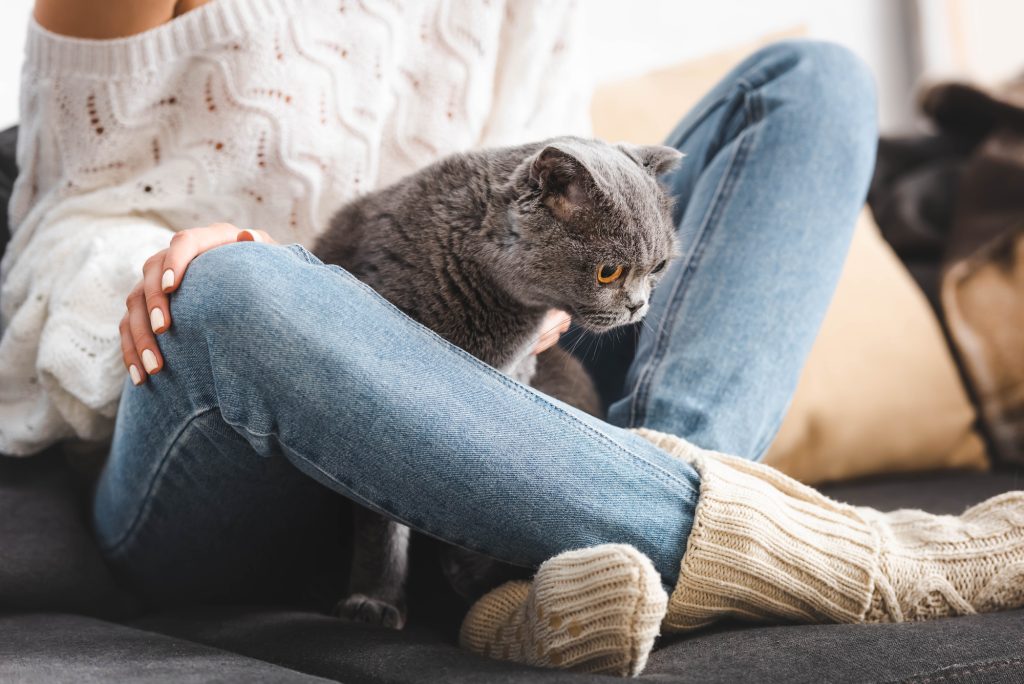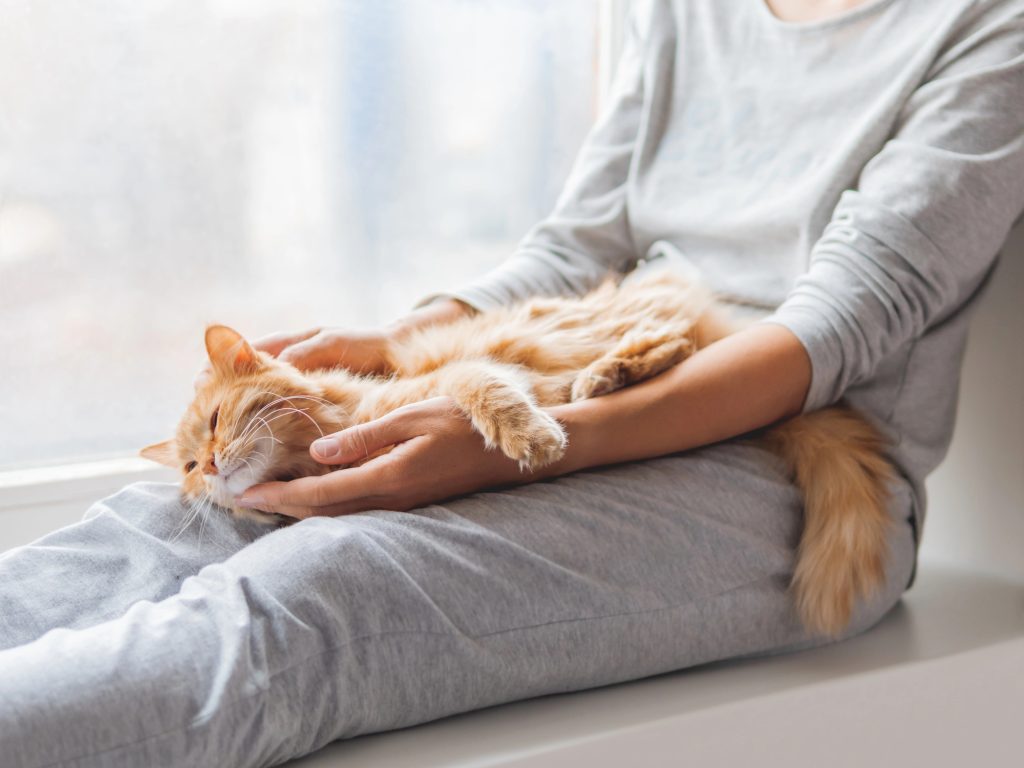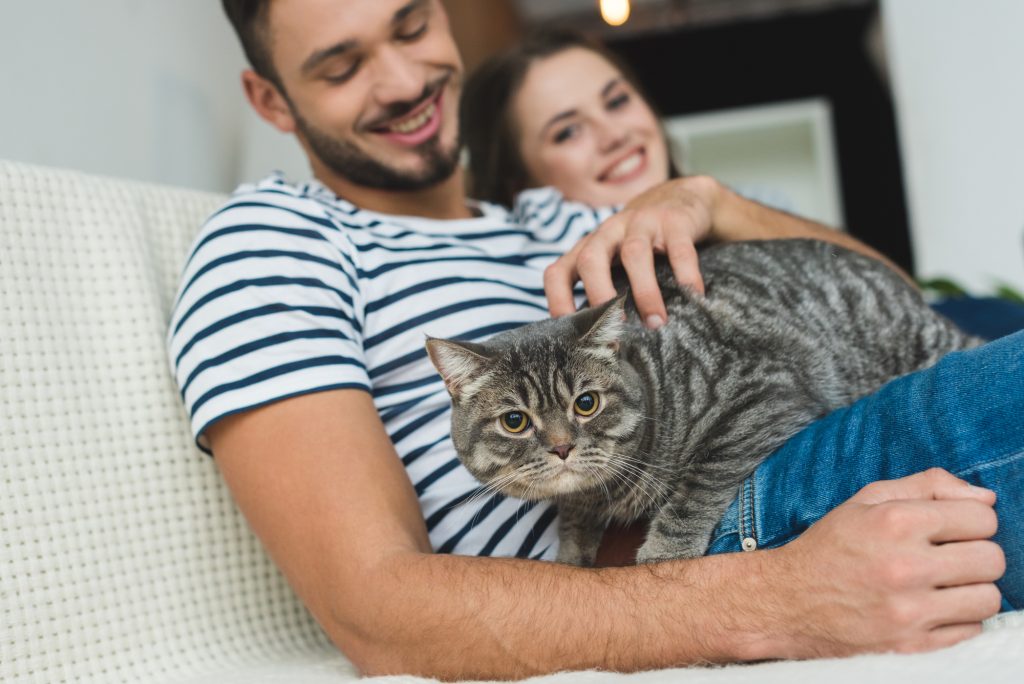Table of Contents
Building a relationship with your cat is a journey of understanding and love. Each cat is an individual with unique personality traits, and getting to know these is key to forming a strong bond. Recognizing what your cat likes and dislikes allows you to tailor your interactions to suit their preferences, ensuring that the time spent together is enjoyable for both of you.
Remember that cats bond on their own terms. Patience and observation can help you interpret their behavior and responses, guiding you in how to approach them. Whether your cat prefers playful engagement or quiet companionship, respecting their individuality will strengthen the connection between you.
Understanding Feline Affection and Bonding Behaviors
Cats express affection in various ways, and tuning into these signals is crucial for bonding. They may not always be as overt as dogs, but feline affection is just as genuine. It’s important not to force interaction, as cats value their autonomy. Instead, allow them to come to you and show trust in their own time.
For example, using a laser pointer during play can stimulate your cat’s natural hunting instincts, but it should never be overdone to the point of frustration. Observing your cat’s reactions to different stimuli and respecting their limits will help create a respectful and loving environment for bonding.
Decoding Cat Body Language
Understanding the signs your cat gives through body language is fundamental for building trust. A relaxed posture, forward-facing ears, and a gently swaying tail indicate a content and approachable feline friend.
The Significance of Slow-blinks and Head Bunting
Slow-blinks and head bunting are powerful indicators of trust and affection in cats. When your cat gazes at you and slowly closes and opens their eyes, they’re offering a sign of comfort and love. Reciprocating with the same slow-blink can reinforce the bond. Head bunting, where your cat gently presses their forehead against you, is their way of marking you as part of their family.
Interpreting Rolling and Belly Exposures
When a cat rolls over and exposes its belly, it’s a sign of great trust. However, unlike dogs, this isn’t always an invitation for a belly rub. It’s often more a sign of comfort in your presence. Recognizing this and not immediately reaching to pet your cat’s belly can show that you respect their space and trust, which in turn deepens your bond.
The Best Age for Bonding: Kitten or Adult Cat?
While kittens are impressionable and can bond quickly, adult cats have established personalities that can make the bonding process just as rewarding. Kittens are most accepting of new experiences around 8 weeks old, making this a prime time for socialization and building a connection. However, older cats can also form deep bonds, often influenced by their past experiences and the patience you show them.
Don’t discount the opportunity to bond with an adult cat. They may require more time to adjust and trust, but the relationship you can form with an adult cat is worth the investment. Understanding their history and providing a stable, loving environment can pave the way for a strong bond regardless of age.
Recognizing the Signs of a Strong Cat-Human Bond
A strong cat-human bond is evident when your cat seeks out your company, communicates with you through meows and purrs, and exhibits relaxed body language in your presence. They may follow you from room to room, sit on your lap, or sleep near you. These behaviors show that your cat feels safe and connected with you.

Creating a Cat-Friendly Environment
A cat-friendly environment is one that meets all of your feline’s physical and emotional needs. It includes elements like scratching posts, hiding spots, and high perches where cats can observe their surroundings. These features cater to their natural behaviors and provide a sense of safety and comfort.
Ensuring Comfort and Security in Your Home
Comfort and security are paramount for a cat’s well-being. Multiple litter boxes and cat trees in different areas of your home allow your cat to feel in control and confident in their environment.
Cozy Beds and Private Spaces
Cats appreciate having their own cozy beds and private spaces. A simple cardboard box with an entrance and exit can become a favorite retreat. Placing these in quiet areas where your cat can observe without being disturbed will help them feel secure and loved.
Safe Indoor and Outdoor Access
Providing safe indoor and outdoor access can greatly enhance your cat’s quality of life. Outdoor enclosures or supervised time outside can offer enrichment, while ensuring your cat remains protected from potential hazards.
Interactive Activities to Foster Connection
Interactive activities are instrumental in bonding with a cat. They provide mental stimulation and physical exercise while strengthening the relationship between you and your feline friend.
Playtime: Essential for Bonding and Health
During playtime, look for signs of engagement such as eyes half-closed in contentment. This indicates that your cat is enjoying the interaction and feeling connected to you.
Choosing the Right Toys for Your Cat’s Personality
Choosing toys that align with your cat’s personality is a way to build trust and show that you understand their preferences. Whether your cat prefers chasing, pouncing, or batting at objects, the right toys can make playtime a bonding experience.
Engaging in Hunt-Simulating Games
Engaging your cat in hunt-simulating games with a wand toy can be thrilling for them and also provide opportunities to bond. These games tap into their instinctual behaviors, making playtime both fun and rewarding.
The Joy of Treats and Food Puzzles
Treats can be a delightful way to reward your cat and reinforce positive interactions. Introducing food puzzles adds a layer of mental stimulation that satisfies their predatory instincts. By hiding treats within these puzzles, you encourage your cat to engage in natural foraging behaviors, which can help strengthen your bond as they associate you with these enjoyable and rewarding experiences.

Navigating the Unique Challenges of Bonding
Every cat is different, and some may present unique challenges when bonding. They may exhibit shyness or anxiety, requiring patience and a gentle approach. Look for signs like eyes half-closed in contentment as indicators that your efforts are building trust.
Bonding With a Newly Adopted Cat
When you bring a new cat home from a shelter or rescue, it’s important to give them time to adjust. Create a welcoming space with all the essentials they need and slowly introduce them to their new environment. Patience is key; allow them to approach you on their terms and respect their need for personal space.
Gradually start engaging with your new cat or kitten through play and gentle petting. Be mindful of their reactions and adjust your approach accordingly. Building trust with a newly adopted cat may take time, but consistent, positive interactions will lay the foundation for a strong and lasting bond.
When to Give Your Cat Space and Independence
Understanding the signs your cat displays when they need space is an essential aspect of bonding. Cats value their independence and may require time alone to recharge. Respecting these boundaries and not forcing interaction will strengthen your cat’s trust in you, leading to a more harmonious relationship.
Bonding With Your Cat Through Health and Wellness
A key component of bonding with your cat involves ensuring their health and wellness. Regular check-ups with a veterinarian, a nutritious diet, and attention to their personal space and comfort all contribute to a cat’s overall well-being and their ability to bond with you.
Importance of Regular Veterinary Care
Regular veterinary visits are essential to keeping your cat healthy and building a strong bond. These check-ups can prevent illnesses, address any behavioral issues, and ensure your pet is at their best. A healthy cat is more likely to be happy and receptive to bonding with you.
Furthermore, being attuned to your cat’s health needs demonstrates your commitment to their well-being. Your involvement in their healthcare can create a sense of security for your cat, knowing that they can rely on you to take care of them in times of need.
Overcoming Common Bonding Obstacles
Common bonding obstacles can include mistrust and past trauma. It’s important not to force interaction, as this can backfire and weaken the bond you’re trying to build.
Expert Advice for Difficult Behaviors
Difficult behaviors in cats can often be a barrier to bonding. Seeking expert advice from veterinarians or animal behaviorists can provide insight into the root causes of these behaviors. With professional guidance, you can implement strategies that address these issues and foster a closer connection with your pet.
Training Techniques to Enhance Bonding
Training your cat with positive reinforcement techniques can significantly enhance your bond. Reward-based training encourages good behavior and provides mental stimulation for your cat. It also establishes a communication channel between you and your pet, deepening your understanding and connection.

Frequently Asked Questions
1. Do cats know their names?
Many cats recognize their names, especially if they are adopted from a shelter or rescue where they may have been called by their name frequently. However, whether they choose to respond to their name can depend on their mood or the context in which it’s used, as well as the tone and consistency of the owner’s voice.
2. Why do cats bond with only one person?
Cats may bond with only one person for various reasons, including that person’s consistent interaction and care. Cats from a shelter or rescue might have had limited contact with humans, leading them to form a deep connection with the one who provides them with stability, safety, and affection.
3. What triggers a cat bond?
Cats and humans can form mutually beneficial bonds through consistent and positive interactions. Bonding with your cat can be triggered by providing your cat with a safe and loving environment, where its needs for cat food, play, and rest are met. Training your cat with patience and gentle guidance can also strengthen your connection, turning potential unwanted behaviors like scratching furniture into positive ones.
Wrapping Up
As we conclude this guide, remember that bonding with your cat is a journey that may have its ups and downs. You may encounter bonding setbacks, such as a twitching tail or flattened ears, which are signs that your cat is feeling uneasy. It’s essential to respect these natural instincts and give your feline friend space when needed. With patience and understanding, these moments can be navigated successfully, strengthening your connection over time.
Lastly, always be mindful of your cat’s body language as it is their primary means of communication. A cat with dilated pupils or a self-soothing mechanism, like kneading, can indicate a range of emotions from excitement to anxiety. By being attentive and responsive to these cues, you’ll cultivate a deep and enduring bond with your cat that is both rewarding and fulfilling. Happy bonding!

Hi, I’m Zoey, a devoted mom to two charming Siamese cats. My passion lies in assisting fellow pet owners in providing optimal care for their cats. On CatsEuphoria, I share practical tips and relatable stories, inviting you to join me in appreciating the authentic bond between humans and our beloved feline companions.




